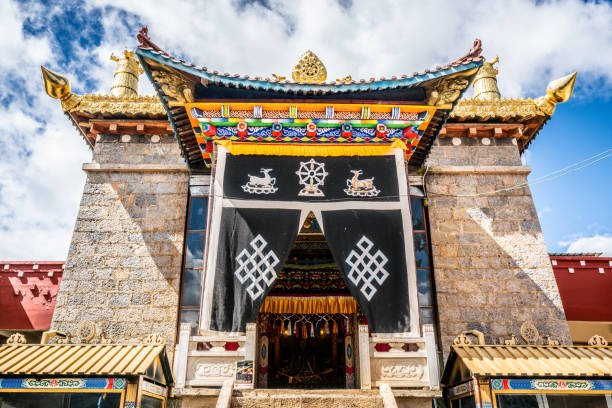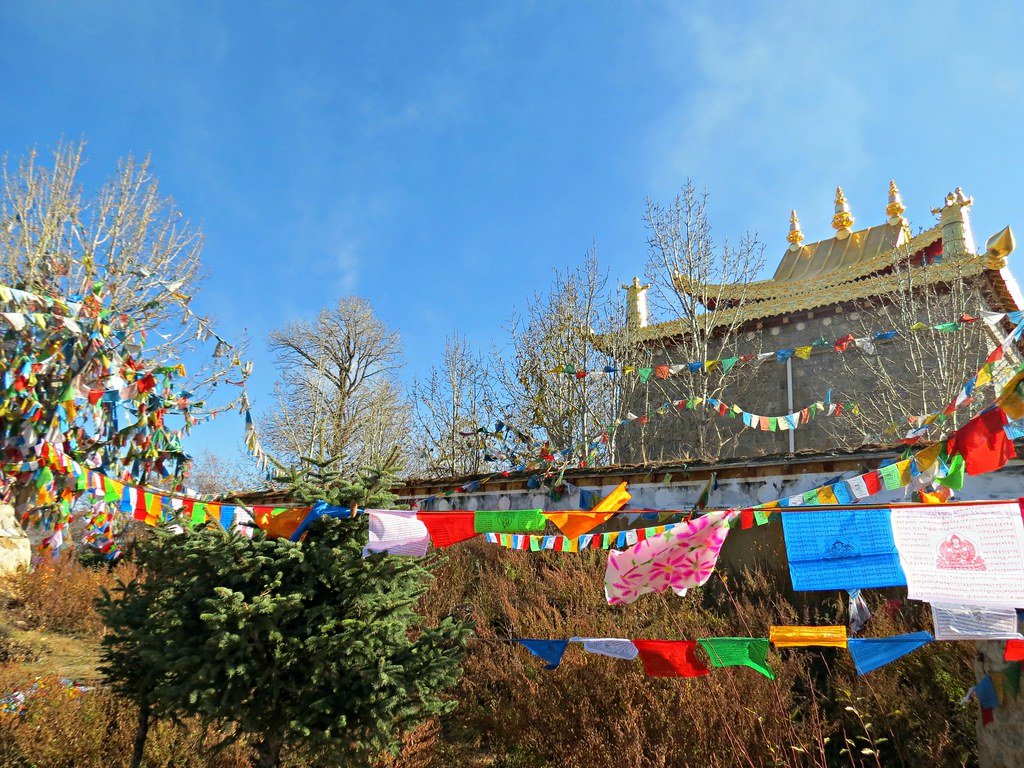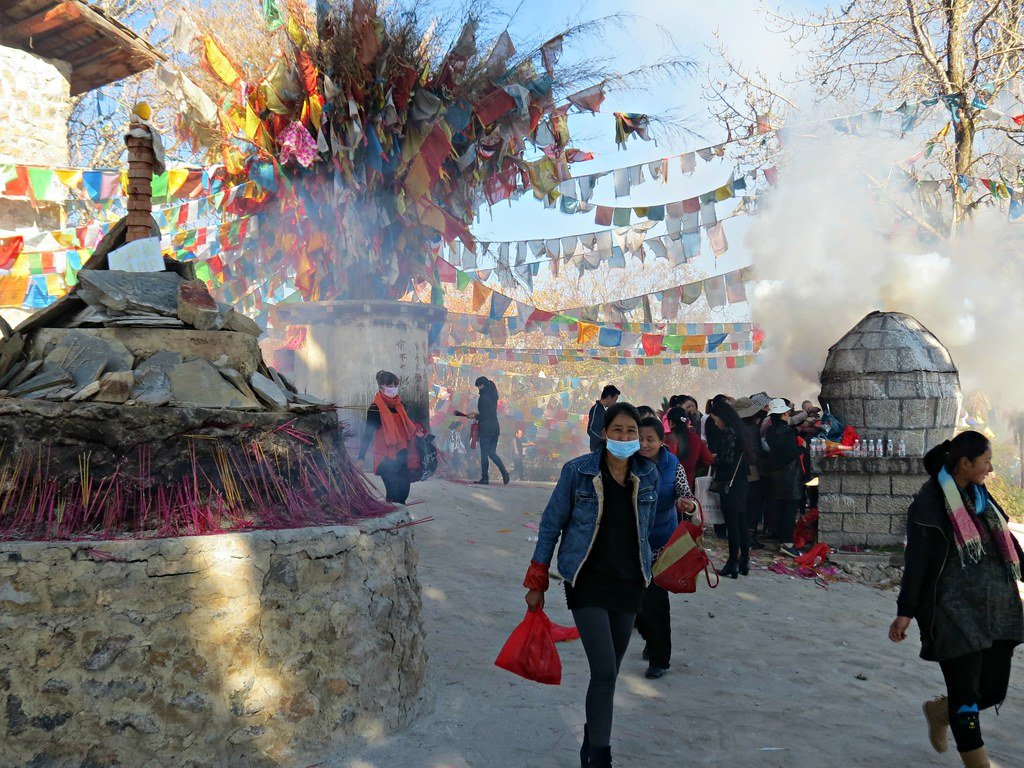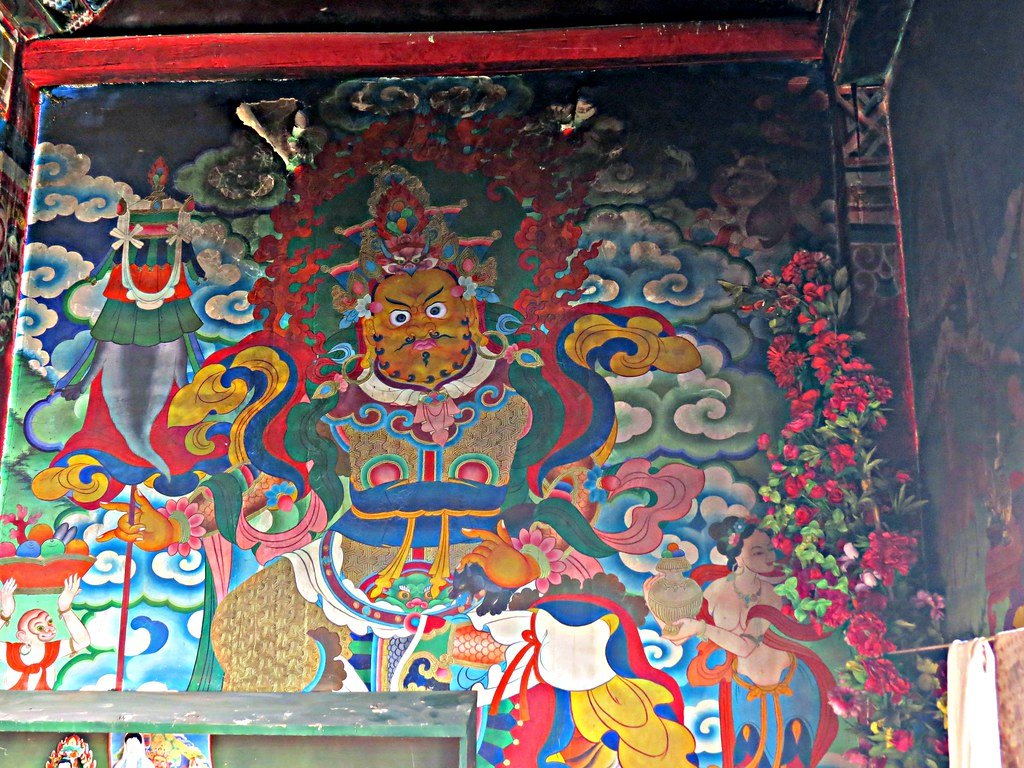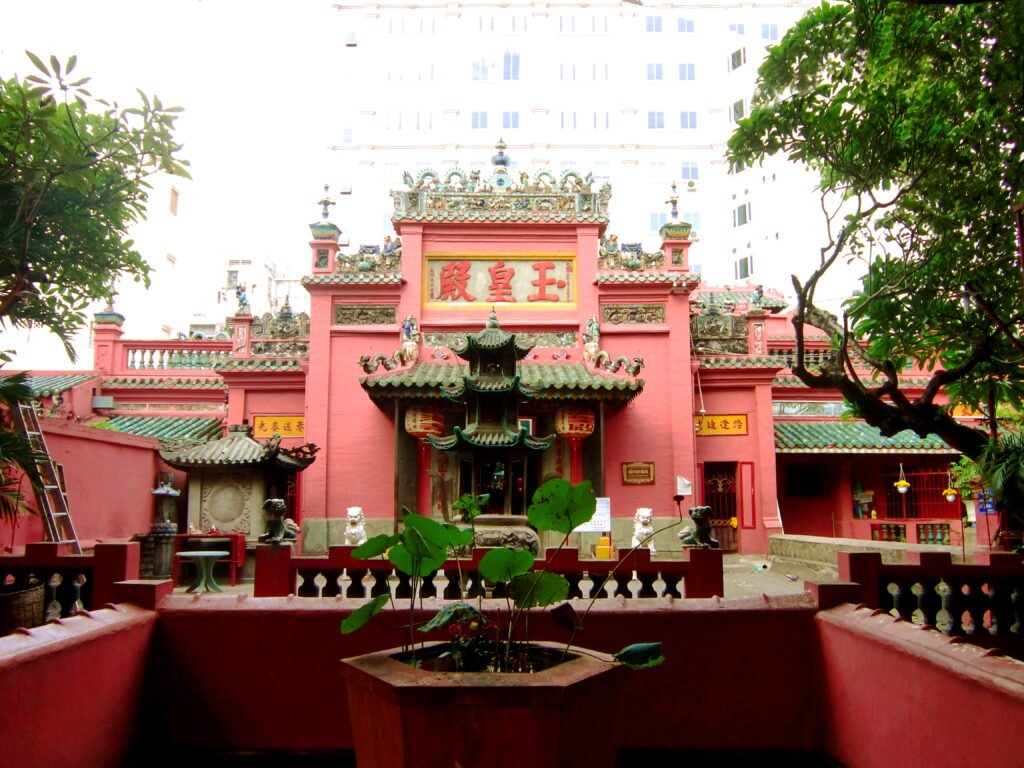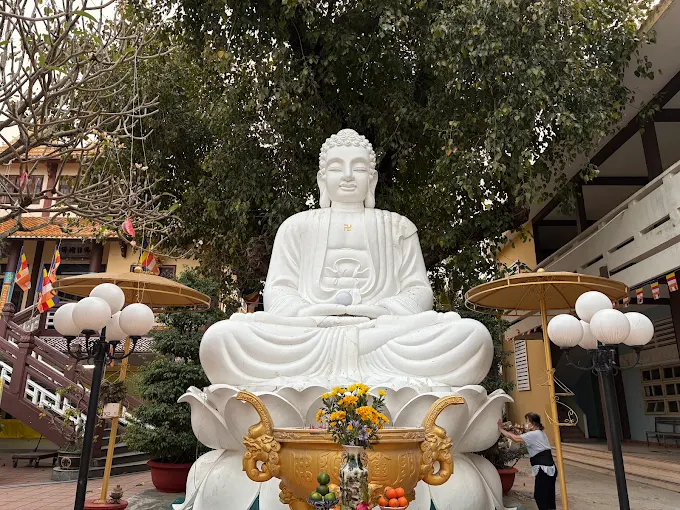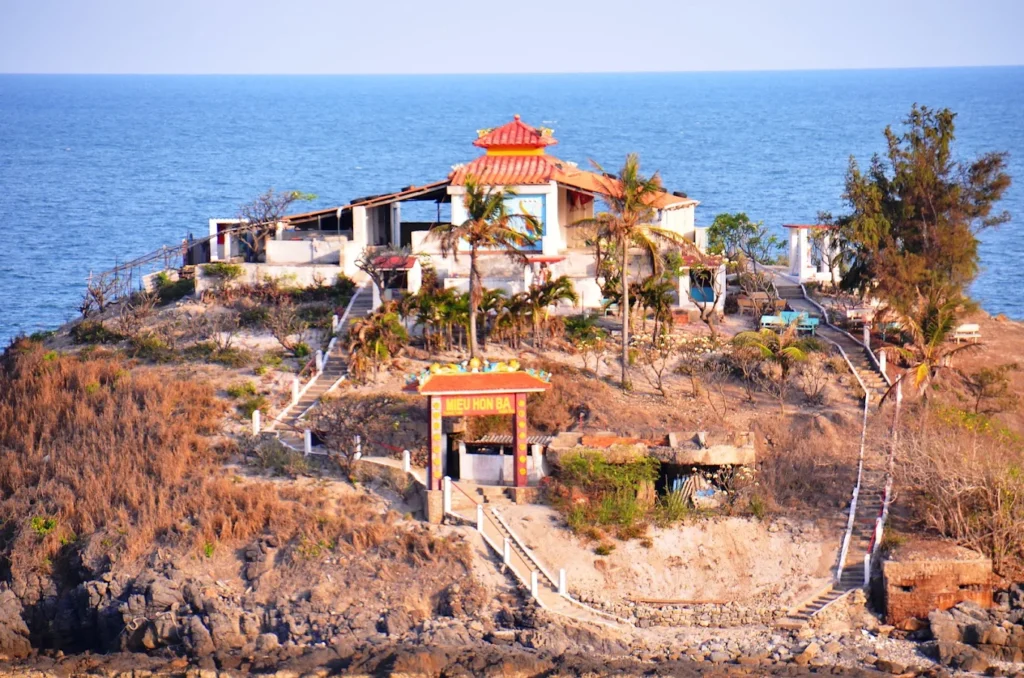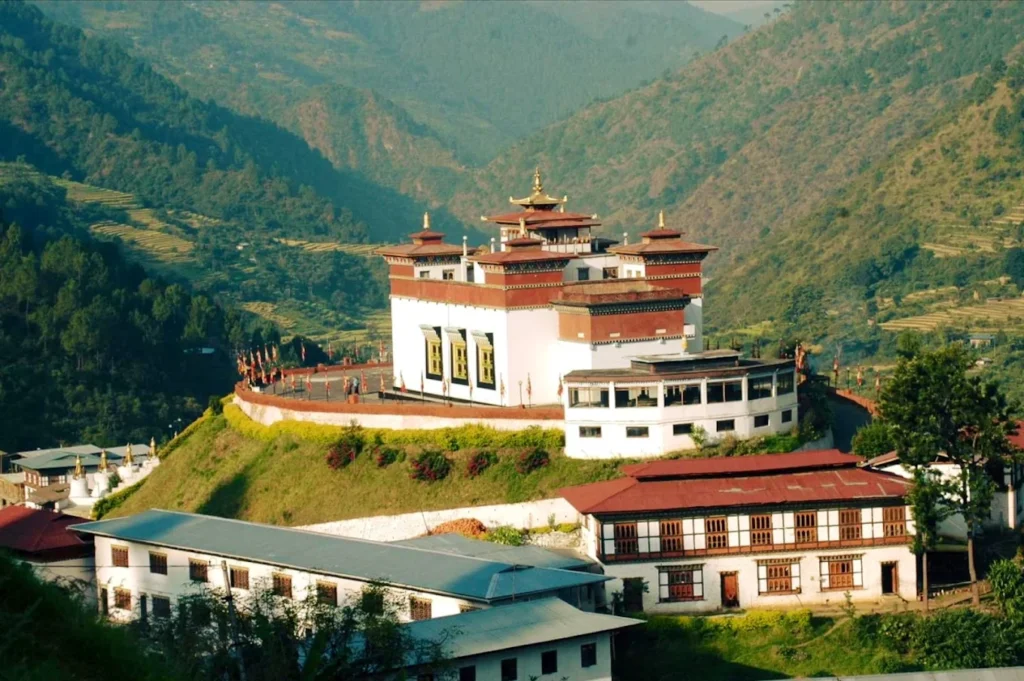Baiji Temple: The Hilltop Haven of Shangri-la’s Sacred Chickens
Baiji Temple, perched atop a verdant hill west of Dukezong Ancient Town in Shangri-la, Yunnan, China, glows as a quaint yet revered Buddhist sanctuary, its serene presence steeped in the unique tradition of releasing chickens as offerings. Established during the Yuan Dynasty (1271–1368), this modest temple, known as “Hundred Chickens Temple” or La ke in Tibetan (“Sacred Fortress Protecting All”), offers panoramic views of Shangri-la’s ancient rooftops. At 3,200 meters, its simple whitewashed walls and prayer flags flutter against the Himalayan breeze, captivating pilgrims and travelers with its tranquil charm. This immersive listing unveils Baiji Temple’s essence, guiding you through its storied past, architectural simplicity, sacred rituals, and practical visitor insights, offering a journey into a hidden gem of Tibetan heritage.
The Sacred Soul of Baiji Temple
Essence of Baiji Temple
Baiji Temple radiates a quiet spiritual warmth, embodying the syncretic Buddhist devotion of Shangri-la’s Tibetan and local communities. Founded in the Yuan Dynasty, it stands as a small but significant shrine, famed for its tradition of releasing chickens as a merit-making offering. Its defining feature—a modest prayer hall adorned with a Sakyamuni statue—anchors its identity as a place of peace and protection. Crowning a hill overlooking Dukezong, Baiji’s serene perch invites reflection on Tibet’s cultural tapestry.
- Spiritual Core: Syncretic Buddhist shrine, merit-making focus.
- Iconic Feature: Chicken release tradition, Sakyamuni statue.
- Cultural Role: Symbol of local Tibetan devotion.
Historical Evolution
Baiji Temple’s story began during the Yuan Dynasty (1271–1368), when it was established as a Buddhist shrine, possibly linked to earlier animist practices, earning its name “Hundred Chickens” from the ritual of releasing fowl. Known as La ke in Tibetan, meaning “Sacred Fortress Protecting All,” it served as a protective sanctuary for centuries. The Cultural Revolution (1966–1976) caused minor damage, but local efforts in the 1980s restored its prayer hall and chorten. Recent maintenance, supported by community donations, preserves its ancient charm.
- Founding: Yuan Dynasty (1271–1368).
- Cultural Revolution: Minor damage, restored in 1980s.
- Preservation: Ongoing community maintenance.
Cultural Impact
Baiji Temple’s chicken release tradition reflects a unique blend of Buddhist compassion and local animist roots, influencing Shangri-la’s cultural identity. Its prayer hall’s thangkas and relics, though modest, are studied via HimalayanArt.org, offering insights into regional Buddhist art. Annual festivals like Losar draw local pilgrims, preserving syncretic rituals. Globally, Baiji’s niche allure attracts cultural enthusiasts resonating as a symbol of Shangri-la’s spiritual diversity.
- Syncretic Tradition: Chicken release blends Buddhism, animism.
- Artistic Legacy: Thangkas reflect regional Buddhist art.
- Global Appeal: Niche draw for cultural tourists.
Signature Legacy
The chicken release ritual, where devotees free poultry as an act of merit, is Baiji Temple’s crowning jewel, a practice believed to grant blessings since the Yuan Dynasty. The Sakyamuni statue in the prayer hall, adorned with simple offerings, radiates serenity, while a small chorten in the courtyard, surrounded by seven ancient trees, symbolizes protection. A legend recounts how a divine rooster crowed to guide the temple’s founding, affirming its sacred role. These elements define Baiji’s spiritual and cultural allure.
- Chicken Release: Merit-making ritual.
- Sakyamuni Statue: Serene prayer hall icon.
- Rooster Legend: Divine founding tale.
Community and Global Reach
Shangri-la locals cherish Baiji, releasing chickens and offering incense on the 1st and 15th lunar days, viewing it as a guardian of prosperity. The temple’s caretaker, often a single monk or layperson, maintains rituals and guides visitors, fostering spiritual continuity. The Tibetan diaspora connects through local Buddhist networks, while international tourists seek its unique tradition. Social media posts on X highlight its hilltop views, linking Baiji to global cultural explorers.
- Local Devotion: Chicken offerings by Shangri-la residents.
- Caretaker Role: Monk/layperson maintains rituals.
- Global Appeal: Attracts niche tourists, diaspora.
Architectural Simplicity of Baiji Temple
Distinctive Design
Baiji Temple’s architecture, spanning a modest 500 square meters at 3,200 meters, embodies minimalist Tibetan Buddhist design, its whitewashed walls and wooden beams blending with the hilltop’s natural contours. Centered on a single prayer hall, it features a small courtyard with a chorten and prayer flags, surrounded by seven ancient trees. The hilltop perch, overlooking Dukezong, creates a serene aesthetic, unique to Baiji’s protective identity.
- Style: Minimalist Tibetan Buddhist.
- Layout: Prayer hall, courtyard, chorten.
- Setting: Hilltop west of Dukezong.
Signature Structures
The prayer hall, a single-room shrine, houses the Sakyamuni statue, flanked by simple thangkas and butter lamps, its wooden beams etched with lotus motifs. The courtyard chorten, restored in the 1980s, stands amidst seven ancient trees, symbolizing protection. A small kora path encircles the hill, lined with prayer wheels, inviting quiet devotion. The hill’s summit platform offers sweeping views of Dukezong, enhancing Baiji’s spiritual ambiance.
- Prayer Hall: Sakyamuni statue, lotus beams.
- Courtyard Chorten: Restored, ancient trees.
- Summit Platform: Dukezong panoramic views.
Artisanal Mastery
Baiji’s thangkas, crafted by local artisans, depict Sakyamuni and Tara with mineral pigments, their modest vibrancy preserved post-1980s restoration. The Sakyamuni statue, carved in wood and gilded, showcases simple Tibetan artistry, its serene gaze captivating devotees. Wooden beams, etched with mantras, adorn the prayer hall, while clay butter lamps illuminate the shrine. These works, though unassuming, highlight Baiji’s cultural legacy.
- Thangkas: Sakyamuni, Tara, mineral pigments.
- Sakyamuni Statue: Gilded wooden relic.
- Wood Carvings: Mantra-etched beams.
Hidden Architectural Gems
Baiji conceals subtle treasures within its compact grounds. The kora path’s overlook offers breathtaking views of Dukezong’s ancient rooftops, framed by prayer flags. A faded mantra inscription on the prayer hall’s beams narrates a Yuan Dynasty blessing, a historical glimpse. The courtyard’s mani stone pile, carved with Om Mani Padme Hum, invites reflection, while a small niche near the chorten holds a relic stone, believed to bless pilgrims.
- Kora Overlook: Dukezong rooftop views.
- Mantra Inscription: Yuan Dynasty blessing.
- Relic Stone Niche: Blessed chorten shrine.
Preservation and Evolution
Preserving Baiji’s modest structures is manageable in Shangri-la’s temperate climate, but limited resources pose challenges. Restoration in the 1980s, funded by local devotees, repaired the prayer hall and chorten using traditional materials. Recent maintenance, supported by community donations, ensures the temple’s longevity. Efforts focus on protecting the ancient trees and thangkas, maintaining Baiji’s sacred charm despite minimal infrastructure.
- Restoration: Prayer hall, chorten repaired in 1980s.
- Maintenance: Ongoing, tree and thangka protection.
- Funding: Local devotees, limited resources.
Sacred Rites and Syncretic Devotion
Sacred Daily Rites
Each dawn, Baiji stirs with quiet prayers, as the caretaker lights butter lamps in the prayer hall, their glow harmonizing with incense. Pilgrims offer incense and release chickens on lunar days, their prayers mingling with the hilltop breeze. The hum of prayer wheels along the kora path creates a meditative rhythm, enveloping visitors in Baiji’s tranquil calm.
- Prayers: Morning butter lamp offerings in prayer hall.
- Offerings: Incense, chicken releases on lunar days.
- Ambiance: Incense, prayer wheel hum.
Unique Spiritual Practices
Baiji’s caretaker performs simple Buddhist rituals, including Sakyamuni-focused prayers, reflecting the temple’s syncretic devotion. Pilgrims release chickens as a merit-making act, a tradition blending Buddhist compassion with animist roots, unique to Baiji. The kora path’s prayer wheels, spun clockwise, accrue merit, tied to the temple’s protective role. These rituals, rooted in Yuan Dynasty practices, deepen Baiji’s spiritual allure.
- Sakyamuni Prayers: Syncretic Buddhist rites.
- Chicken Release: Merit-making, animist-Buddhist blend.
- Kora: Prayer wheel circumambulation.
Vibrant Festival Traditions
Baiji’s festivals, though modest, echo Shangri-la’s spiritual vibrancy. Losar (Tibetan New Year) features incense offerings and chicken releases, drawing local pilgrims to the hilltop. Saka Dawa, marking Buddha’s enlightenment, includes kora walks and communal feasts of tsampa (roasted barley) and butter tea, uniting residents. These events, centered on merit-making, reinforce Baiji’s role as a community anchor.
- Losar: Incense, chicken releases.
- Saka Dawa: Kora, communal feasts.
- Community Role: Tsampa, tea shared.
Visitor Engagement
Visitors can offer incense or spin prayer wheels, guided by the caretaker, immersing in Baiji’s spiritual life. Photography is permitted (no fee), capturing hilltop views and thangkas, but avoid flash in the prayer hall and respect the chicken ritual. Joining the kora lets travelers walk with pilgrims, feeling Baiji’s sacred rhythm. The caretaker may share tales of the divine rooster, enriching the visit with local lore.
- Offerings: Incense, prayer wheel spinning.
- Photography: Free, no flash in prayer hall.
- Kora Participation: Walk with pilgrims.
Monastic and Community Roles
Baiji’s caretaker, often a monk or layperson, maintains daily rites, preserves relics, and guides visitors, upholding its spiritual legacy despite its minimal scale. They offer blessings for local harvests and life events, strengthening Dukezong ties. The temple supports occasional thangka restoration by local artisans, preserving Buddhist artistry. This bond ensures Baiji remains a living cultural center, fostering devotion on the hilltop.
- Caretaker Duties: Rites, relic preservation, guidance.
- Community Ties: Blessings for local events.
- Art Preservation: Thangka restoration support.
Visiting Baiji Temple
Navigating to Baiji Temple
Baiji lies on a hill west of Dukezong Ancient Town, Jiantang Town, Shangri-la City, Diqing Tibetan Autonomous Prefecture, Yunnan, China. From Lhasa, a 1,200-km flight or 24-hour drive reaches Shangri-la’s Diqing Airport or city center. From Dukezong, a 20–30-minute walk or 5-minute taxi (~10 RMB) up a staircase reaches the temple, marked by prayer flags and ancient trees. The nearby Songzanlin Monastery, 5 km away, serves as a contextual landmark.
- From Lhasa: 1,200 km, 1-hour flight or 24-hour drive to Shangri-la.
- From Dukezong: 20–30-minute walk or 5-minute taxi, west hill.
- Local Access: Staircase walk from Dukezong.
Address of Baiji Temple
- Location: Jiantang Town, Shangri-la City, Diqing Tibetan Autonomous Prefecture, Yunnan, China.
- Coordinates: 27.8167° N, 99.7000° E (approximate).
- Context: Hill west of Dukezong Ancient Town.
Visiting Hours and Etiquette
Baiji is open 24/7, with daytime visits (8:00 AM–6:00 PM) recommended for safety and visibility. Dress modestly, covering shoulders and knees, to show respect. Photography is free; avoid flash in the prayer hall and respect the chicken release ritual. Maintain silence, walk clockwise around sacred areas, and avoid touching relics or disturbing poultry. The hill climb requires moderate fitness.
- Hours: Open 24/7, best 8:00 AM–6:00 PM.
- Dress Code: Modest clothing, respectful demeanor.
- Etiquette: Free photography, no flash, respect chickens.
Accessibility and Safety
Baiji’s hilltop is accessible via a 20–30-minute staircase climb from Dukezong, challenging for those with mobility issues; sturdy shoes are essential. Wheelchair access is unavailable due to steps; arrange assistance via tour operators. Shangri-la’s 3,200-meter altitude requires acclimatization; hydrate and rest to avoid sickness. The site is safe, but watch for uneven steps and stray animals, and carry cash for nearby markets.
- Accessibility: Staircase climb, no wheelchair access.
- Mobility Aids: Limited, arrange assistance.
- Safety: Acclimatize, watch for steps, carry cash.
Amenities and Surroundings
Baiji offers no restrooms, shops, or dining; bring water and snacks. Dukezong Ancient Town, a 10-minute walk downhill, serves momos (dumplings), butter tea, and yak-meat noodles, immersing visitors in Tibetan flavors. The hilltop platform and courtyard provide serene reflection spots with Dukezong views. Shangri-la’s old town, with shops and teahouses, and nearby Foping Mountain offer scenic exploration, enriching the visit.
- Amenities: None on-site, bring essentials.
- Food: Dukezong markets with momos, tea.
- Surroundings: Hilltop platform, Dukezong views, Foping Mountain.
Immersive Visitor Tips
Visit at sunrise to witness the caretaker’s morning prayers, the incense mingling with dawn’s glow, setting a meditative tone. Photograph the prayer flags from the hilltop platform at midday, capturing Dukezong’s rooftops, respecting the no-flash rule. Walk the kora at dusk, when the town glows golden, enhancing Baiji’s tranquil ambiance. Savor butter tea in Dukezong’s markets, chatting with locals about the divine rooster legend for cultural insights.
- Sunrise Visits: Witness prayers at dawn.
- Photography: Prayer flag shots, no flash, hilltop platform.
- Evening Kora: Dukezong views at dusk.
